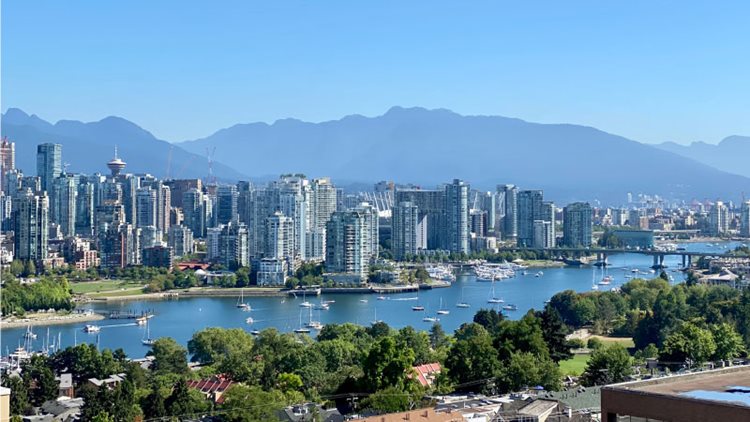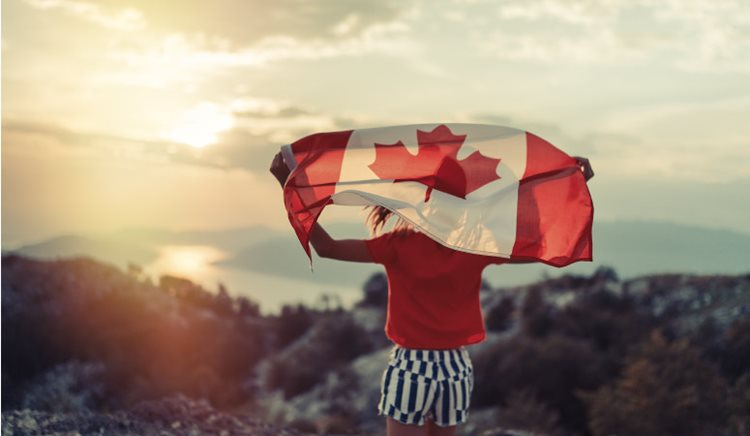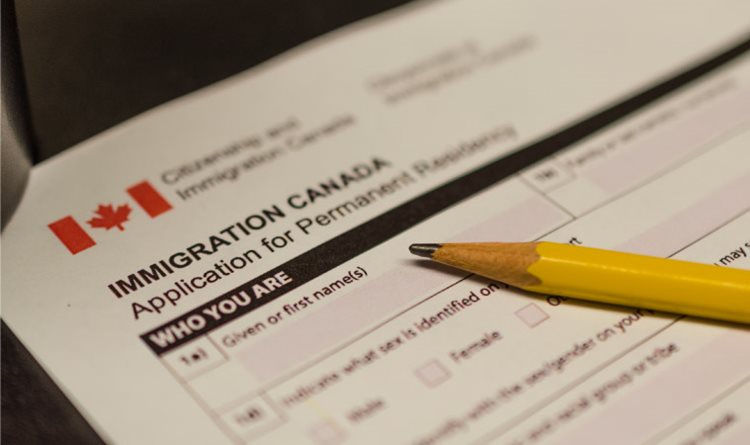How To Move to Canada as a U.S. Citizen
One of the most important things to consider before moving to Canada from the U.S. is how to gain citizenship. Gaining a visa and then your citizenship is required to become an official resident in the country.
1. Have Passports and Visas Ready To Go.
Passports from the United States last ten years if citizens get them when they’re sixteen years or older, and generally they’re always a good thing to have. Since you’ll likely want to visit Canada before you move there, have your passport ready to go. But when it’s time to move, just a passport isn’t going to cut it. You’ll need to apply for a visa to make sure you are approved to move to the country. This process can take a few months or even a few years until you are accepted, so you’ll need to be patient. The process to get a visa can be a long one, so here’s a breakdown of what to expect:
- Apply for a visitor visa, work permit, or study permit.
- Get your fingerprints and photos taken.
- Wait for Canada to process your application.
- Wait for a decision to be made on your application.
- If approved, travel to the country.
- Have your identity checked at the border before you can safely enter the country.
2. Learn How To Get Citizenship in Canada.
There are different ways that you can become a citizen of Canada, and just like getting a visa, this is also a process that can be very time-consuming. If you want to become a citizen in Canada, here is how to do so:
- Have a permanent resident status.
- Live in Canada at least three out of the past five years.
- File your taxes in Canada.
- Pass a citizenship test.
- Prove your language skills are up to par (in either English or French, not both).
3. Consider Which Province Caters to Your Line of Work.
It’s important to get an idea of which province of Canada would best suit your situation. If you’re looking to move to a province that has good companies to work for in the profession you’re in, that can make your decision a lot easier. Here are some of the more popular provinces and the top industries you can find there:
- Alberta: Energy (especially oil sands, natural gas, and coal), agriculture, forestry, machinery, plumbing, metalwork
- New Brunswick: Manufacturing, tourism, fishing, forestry, mining
- British Columbia: Forestry, fishing, mining (gold, silver, and other minerals), tourism, entrepreneurial activity
- Ontario: Manufacturing, information and technology, forestry, journalism, the arts, culture
- Manitoba: Agriculture (especially wheat), manufacturing (especially food, machinery, transportation equipment, and clothing), mining
- Quebec: Tourism, design, software development, commerce, aerospace, mining, forestry, hydroelectric power

PODS knows how to move you to Canada from the U.S. with flexibility and efficiency.
How To Move to Canada From the U.S.: Logistical Considerations
Moving across borders gets a little more complicated than your everyday move. Often, you’ll need to be in Canada before your stuff arrives so you can claim it and clear customs.
Full-Service Movers
If you have the extra cash and want to lift as little as possible, consider looking into a full-service mover. A full-service mover helps to get everything done when you’re moving from start to finish. They will help you pack your belongings, put them in the truck, drive them to your new home, and unpack your boxes if you’d like.
Look for a company that has experience in cross-border moves, because they can get complicated. Many companies will offer a personal coordinator to figure out the specifics of your move.
Moving Truck Rentals
If you’re willing to do all the manual labor and drive a truck hundreds of miles to your new destination in Canada, then renting a moving truck may be a great option for you. Several truck companies will allow you to drive a truck across the border, but make sure you know the relevant laws and regulations.
PODS Moving and Storage
If you want to make this process fit your schedule perfectly, then you should consider moving with a PODS portable container. PODS has locations across the U.S. and Canada, making this cross-border move easier than you might expect.
Moving with PODS gives you flexibility and freedom from start to finish. It’s simple: All you need to do is call ahead and a container will be delivered to your driveway. Just fill it up with all of your belongings, have PODS pick it up and deliver it to your new home, and then unpack it when you arrive at your new home in Canada.
You will need to be in Canada before your container arrives and be there by the time it does. PODS will contact you when your container is ready for you at a CBSA-licensed facility.
Once in Canada, you can keep your container as long as you need it, meaning you can take your time unloading. You can also store it in a secure PODS Storage Center if you’d like. That way, you have time to move in at your own pace.

Be sure to pack your warmest winter clothing when moving to Canada from the U.S.
What To Expect When Moving to Canada From the U.S.
Moving to Canada from the U.S. is a life-changing experience. Even though they are neighboring countries, they have a lot of differences, both big and small. If you’re planning on moving to Canada from the U.S., here are some things to keep in mind.
1. Prepare for Bitterly Cold Weather, Especially During the Wintertime.
Since Canada is located north of the United States, there’s a good chance you’ll experience colder weather than you may be used to. Canada has interesting climate changes that are important to keep in mind if you’re planning on moving there (like getting down to -40 degrees Fahrenheit in the interior provinces!).
2. Get a Job and a New Home Lined Up Before Moving.
Before moving to Canada from the U.S., consider taking the time to visit the country first to find a new home for you and your family, and have a job lined up to start shortly after your arrival.3. Consider the Local Currency, or Ensure You Have a Credit Card.
Instead of the American dollar, Canada has the Canadian dollar, and one American dollar equals about 1.36 Canadian dollars. For example, if you bring $20,000 USD with you, expect to enter Canada with $27,189 CAD.
It’s important to have some cash on hand to exchange for the local currency when you decide to move. You’ll also need to consider how to move your money to a new bank or apply for a credit card in Canada.
4. Learn the Canadian-isms.
If you’re moving to Canada, it’s essential to get to know the Canadian-isms — or Canadian slang — so you know what the locals are talking about. Some examples include:- Loonie: Canadian dollar coin
- Toonie: Canadian two-dollar coin
- Tuque: Knitted hat
- Washroom: Bathroom
- Double Double: Coffee with two creams and two sugars/li>
- Knapsack: Backpack or rucksack
- Hydro: Electricity (e.g., electric bill = hydro bill)
5. Familiarize Yourself With the Metric System
One thing to know about Canada is that they use the metric system instead of the imperial system, like in the United States. This means that instead of using feet, yards, inches, pounds, or ounces, you will instead use kilometres, litres, metres, grams, and — when it comes to driving — you will use kilometres per hour instead of miles per hour.
6. Prepare To Spend More on Some Things in Canada.
Your taxes in Canada may be higher due to the programs and services that are offered there, such as free healthcare and the education system. And consumer goods tend to be higher priced in Canada than in the U.S. Of course, your total cost of living depends on several other factors, so it may not necessarily be more expensive to live there overall.7. Learn the Specifics about Moving Pets, Cars, Mattresses, and More Over the Border.
Do you have pets, your own car, and other large belongings that may be difficult to get over the border? For pets, you should consider bringing health certificates and ensuring they are safe to travel to the country beforehand, and for your car, make sure you go through the steps to register it to Canada. Any other large belongings (like mattresses) should be fine in your moving truck or PODS storage container.

Vancouver, British Columbia, is known for its natural beauty and abundant outdoor activities.
Moving To Canada from the U.S.: Deciding Where To Live
Canada is a beautiful country to reside in, and there are numerous incredible cities, suburbs, and neighborhoods to live in. But what is the perfect place for you? It can be hard to decide where to live as it is, but it can be especially intimidating when you’re moving to a new country. Here are some of the top destinations that you might want to call home if you’re moving to Canada from the U.S.
1. Ottawa, Ontario
If you want to experience low-cost living in Canada but also enjoy the city life, a walkable community, and some of the best public transportation around, then you need to consider living in Ottawa, Ontario. Ottawa is the nation’s capital where over 1 million people live.
In this area, people speak mostly English and French, and there are plenty of career opportunities in tech industries, the government, the medical field, and in education. You can check out the three major rivers located in this area, the pretty beaches, and lots of other recreational attractions, too.
2. Vancouver, British Columbia
Do you want to reside in one of the most livable cities in the world? If so, then you need to consider looking into Vancouver, British Columbia. This is a city known for its natural beauty, beaches, the great outdoors, and mild year-round weather.In Vancouver, you’ll enjoy a steady work-life balance and high quality of life, with lots of opportunities to get outdoors. If you love biking or hiking, then you’ll definitely want to check out the mountains in the area.
3. Montreal, Quebec
If you want to move to one of the safest places in Canada, then you need to consider living in Quebec. Montreal, specifically, has been known for its low crime rates in Canada. This city is affordable, has a great nightlife scene and incredible skyscrapers to see, not to mention there’s a classic European feel about it. It’s important to get familiar with the French language, as it is spoken in this part of the country the most.4. Hamilton, Ontario
Do you want to live somewhere in Canada that has a little bit of everything? If you do, then Hamilton, Ontario, may be the place for you. Hamilton has an incredible restaurant scene, a diverse population, and affordable housing.
Hamilton has some of the most beautiful scenery, as well, such as the more than 150 waterfalls citizens can enjoy year-round. It also offers some of the best educational opportunities in the country, as some of the best colleges and universities call this city home.
5. Toronto, Ontario
If you like the brisk pace of city life, you should consider living in Toronto, Ontario. This is a beautiful city known for its bustling lifestyle and is often called Canada’s New York City.People are packing up and moving to Toronto because it’s a multicultural community, an active city that promotes fitness, there’s a delicious restaurant scene, and you experience all four seasons there.

If you’re outdoorsy, enjoy a healthy work-life balance, and want to live somewhere with a lower crime rate, then moving to Canada from the U.S. might be the right choice for you.
Is Moving to Canada From the U.S. Worth It?
You may be wondering if moving to Canada from the U.S. a good idea, so here are some reasons why we think it is!
1. Residents Get Free Healthcare.
When people think about Canada, the first thing that they tend to think about is their free healthcare system. Canada offers free healthcare to permanent residents who have lived in the country for at least three months. You can receive free hospital visits, physician services, and so much more with a free healthcare plan in Canada.2. There’s a Great Work-Life Balance.
No matter where you live or what kind of job you have, being able to balance work and life is the key to success. Many Canadian workers enjoy normal, eight-hour shifts and then come home and still have time for their lives, relationships, and fun. Mandatory paid holidays, generous vacation time, and paid maternity leave are just some of the perks that people enjoy when working in Canada.
3. You Can Embrace the Outdoor Lifestyle.
Canada is a beautiful country, and there are plenty of ways to get outside and embrace what the country has to offer. You can participate in outdoor activities, such as kayaking, cycling, hiking the mountains and woods, visiting the beaches, and so much more, almost anywhere in the country.
4. There Are Lower Crime Rates To Keep You Safe.
Another reason why you should consider moving to Canada from the U.S. is because of its low crime rates. The country has a well-functioning law enforcement system and a tight-knit community that not only partners with police officers but emphasizes crime prevention through youth programs and public initiatives. There are also strict gun control laws, which could be why it sees far fewer gun crimes than in the U.S.
Moving to Canada from the U.S. — FAQs
Q: Can I live in Canada if I am a U.S. citizen?
A: It is quite possible for any U.S. citizen to move to Canada, with approval. And if you decide to complete all the steps to become a Canadian citizen, you can continue to be an American citizen with dual citizenship.
Q: Is it easy for Americans to move to Canada?
A: It is fairly easy to move to Canada. This is due to their welcoming acceptance of new immigrants. All you need to do is meet the requirements, such as getting your visa and earning your citizenship.
Q: Can an American move to Canada without a job?
A: If you are planning to move to Canada, you don’t need a job offer to move. However, if you are eligible for the Federal Skilled Worker Program or the Federal Skilled Trades Program and don’t have enough money to support your family, you are required to have a job before moving.
Q: How much money do you need to immigrate to Canada from the USA?
A: Researchers suggest, if you are an individual moving to Canada, you will typically need around CAD 17,000. Couples need around CAD 23,000, and for families with children, you should bring about CAD 28,000 to 33,000 to Canada with you.

Moving to Canada from the U.S.? Gaining a visa and then your citizenship is required to become an official resident in the country.
What You Need To Know About Moving to Canada as a U.S. Citizen: A Quick Overview
TLDR? That’s ok. Let’s break down the high points of how to move to Canada from the U.S. and a few reasons why so many people are immigrating to the Great White North.
- If you want to become an official Canadian resident, you’re going to need your passport and a visa. After you’ve been in Canada for at least three years, you can apply for citizenship.
- If you have pets and/or a car, you may have to take special action to get them registered in Canada.
- Planning on moving to Canada from the U.S. but undecided on an exact locale? Some of the more popular provinces include Alberta, New Brunswick, British Columbia, Ontario, Manitoba, and Quebec (but brush up on your French before going there).
- Pack your warmest jacket. Even the more temperate provinces have cold winters.
- Also, have some cash — in Canadian dollars — on hand for your move. American dollars won’t be accepted.
- Speaking of money, your taxes may be higher in Canada, and you may spend more on consumer goods, but the cost of living is slightly lower than in the U.S.
- One factor that may make your money go farther is the fact that Canada has free public healthcare for permanent residents.
- Other perks include work-life balance, a vibrant outdoorsy lifestyle, and low crime rates.
Ready to grab your tuque and knapsack and hit the road? For more tips and tricks on moving to Canada from the U.S., visit the PODS Blog.
Unsure what’s required for a cross-border move? PODS can answer your questions and help with all your moving and storage needs. Get a quote today.
Related Articles
Comments
Leave a Comment
Your email address will not be published. Required fields are marked *

